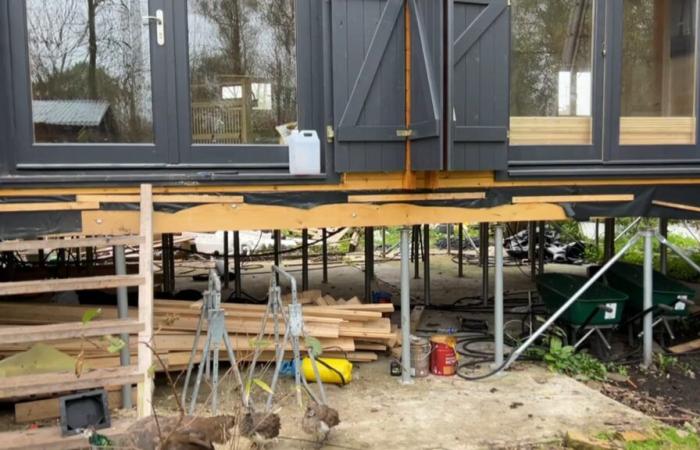One year after the passage of storms Ciaran and Domingos, Ludwig Zoonekynd, president of the Guînes marsh educational park shelter, has a brand new accommodation. Located 140 centimeters from the ground, it is installed on stilts to protect against other future floods.
In November 2023, part of Pas-de-Calais was submerged under several tens of centimeters of water after the passage of storms Ciaran and Domingos. At the time, Ludwig Zoonekynd, president of the Guînes marsh educational park shelter, watched helplessly as his shelter and home were flooded. He had to rebuild everything.
A year later, his new home rose from the ground 1.40 meters above the ground. “The whole house will rest on metal piles which are fixed directly to the old concrete slab and which can still be adjusted in height if necessary,” he explains to BFM Grand Littoral.
In the event of flooding, the water will pass underneath the house, without damaging the structure.
Amphibious houses, the solution?
The work carried out by this northerner is not new and could be useful for other disaster victims. For Philippe Jauss, architect in Saint-Martin-Lez-Tatinghem, it is even a solution.
“We could even imagine like a pontoon with a house that literally floats on the water, which is within reach to be able to raise its level when the water arrives,” he adds.
There remains the problem of cost, nuances the architect, which could be higher for residents than simply moving to land where the risk of flooding is less, or even zero.
If the idea is only just emerging in France, amphibious houses have already been adopted in the Netherlands. They had proven themselves in 2011, during a major flood.
200,000 euros investment
However, despite the considerable damage caused by the floods, there was no question for Ludwig Zoonekynd of packing up and moving to another location.
“We couldn’t see ourselves going anywhere else. Moving all our animals is a bit complicated, we are still on one hectare with around 150 animals,” he explains.
After 200,000 euros of investment, the president of the educational park shelter hopes to be able to move in for the end of year celebrations.
Clément Kaminski with Mélanie Hennebique






